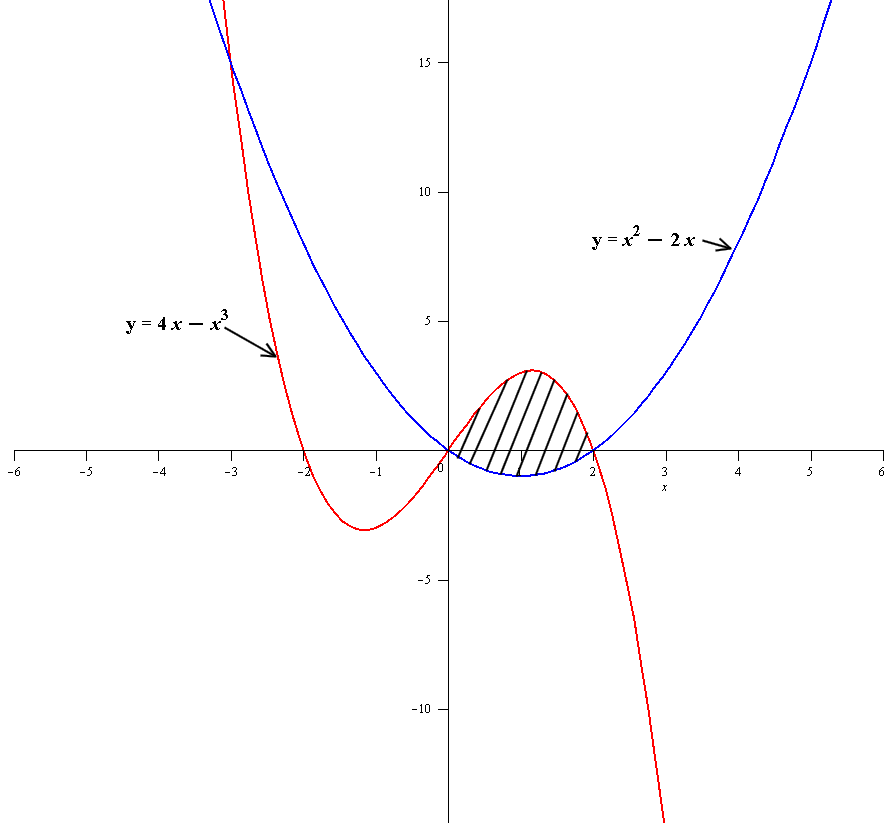From the graph we can see that the area we seek is in the interval #[0,2]#

For accuracy we need to find the points of intersection algebraically rather than trying to find them from the graph.
If:
#y=x^2-2x# and #y=4x-x^3#
Then:
#x^2-2x=4x-x^3=>x^3+x^2-6x=0#
Solving for #x#:
#x(x^2-6x)=0=>x(x+3)(x-2)=0#
Points of intersection:
#(0,0) , (2,0) , (-3,15)#
Area under #4x-x^3# in #[0,2]#
#"A"=int_(0)^(2)(4x-x^3) dx=2x^2-1/4x^4=[2x^2-1/4x^4]_(0)^(2)#
#[2x^2-1/4x^4]^(2)-[2x^2-1/4x^4]_(0)#
Plugging in upper and lower bounds:
#[2(2)^2-1/4(2)^4]^(2)-[2(0)^2-1/4(0)^4]_(0)#
#[8-4]^(2)-[0]_(0)#
Area #= 4#
Area under #x^2-2x# in #[0,2]#
#"A"=int_(0)^(2)(x^2-2x)dx=1/3x^3-x^2=[1/3x^3-x^2]_(0)^(2)#
#[1/3x^3-x^2]^(2)-[1/3x^3-x^2]_(0)#
Plugging in upper and lower bounds:
#[1/3(2)^3-(2)^2]^(2)-[1/3(0)^3-(0)^2]_(0)#
#[8/3-4]^(2)-[0]_(0)=-4/3#
Area #= 4/3#
Total area:
#4+4/3=16/3=5.33" units"^2# ( 2 .d.p)


